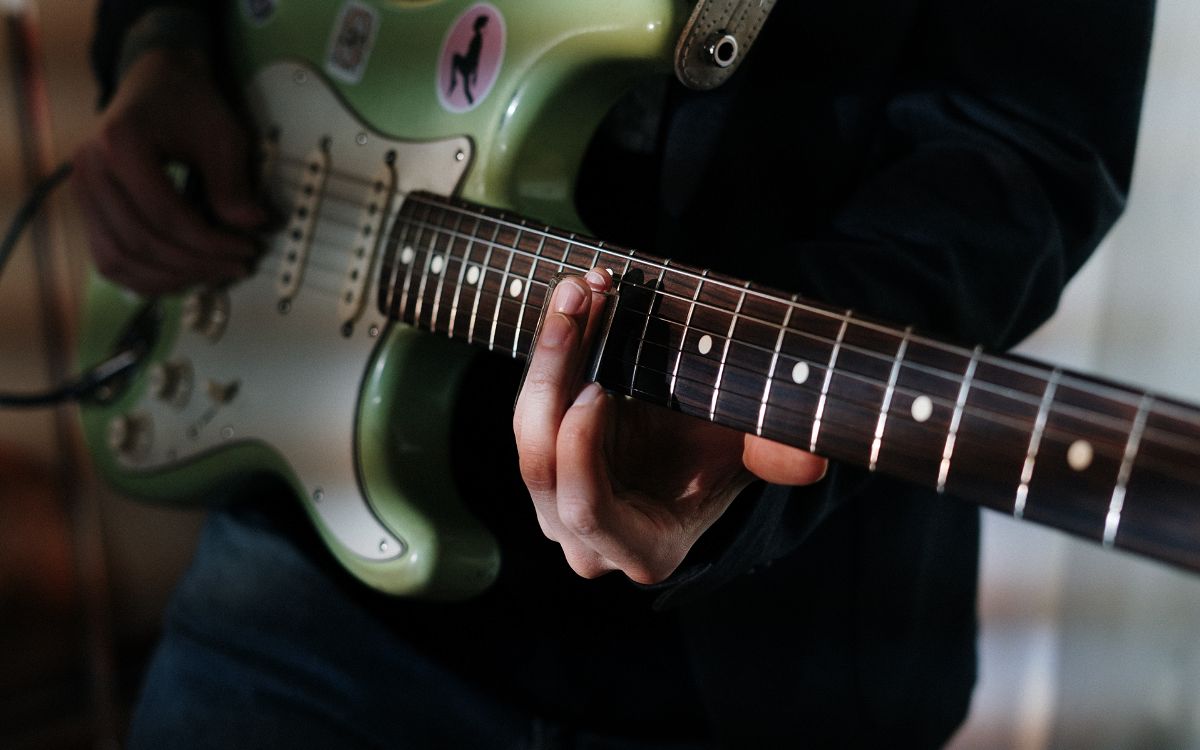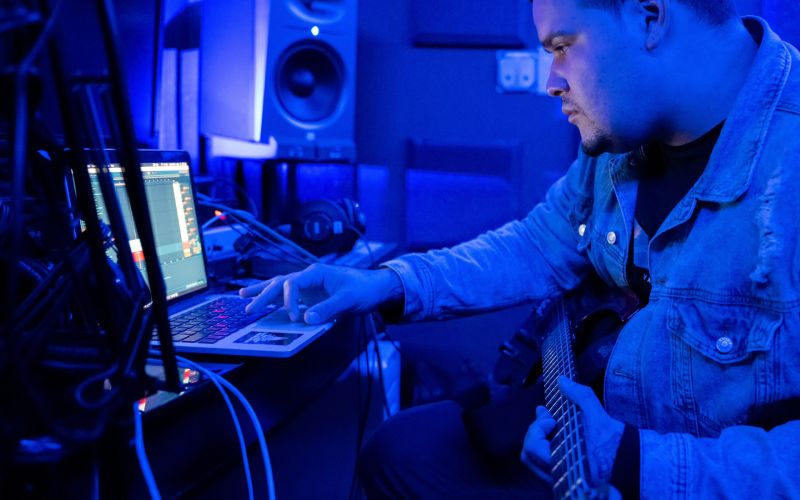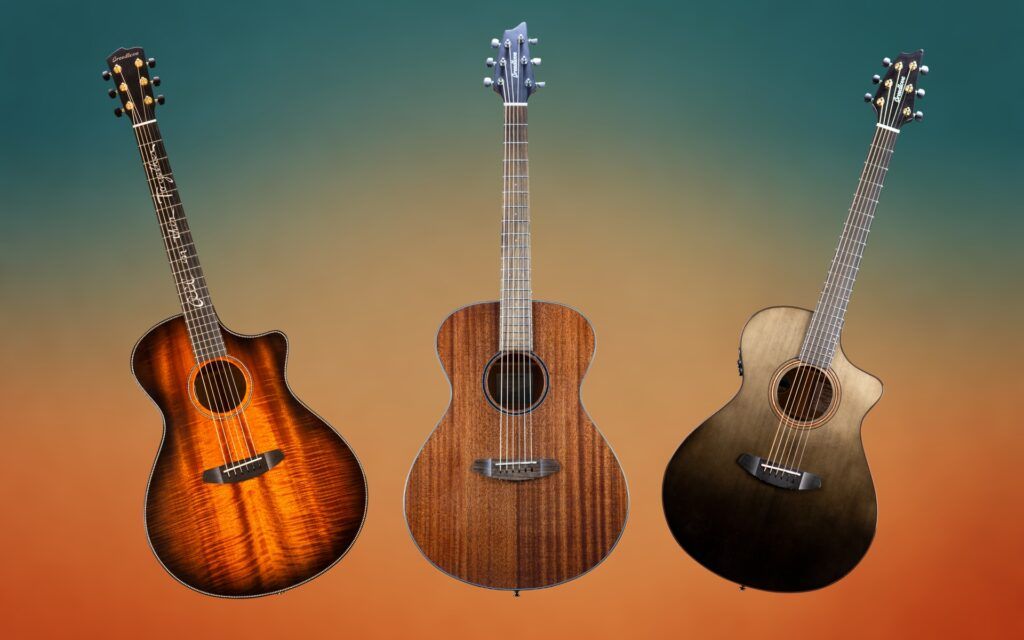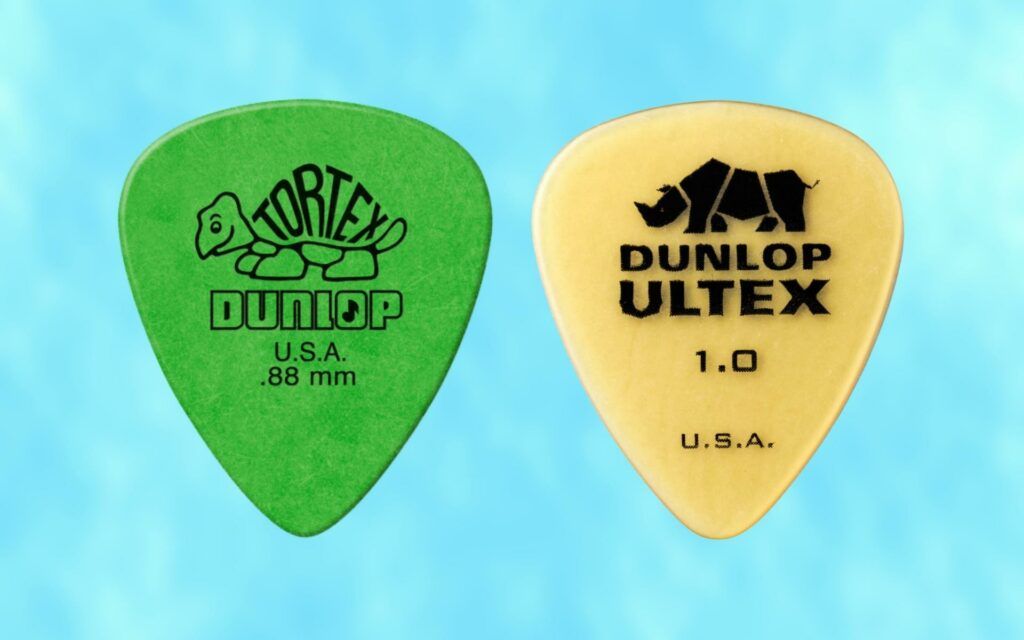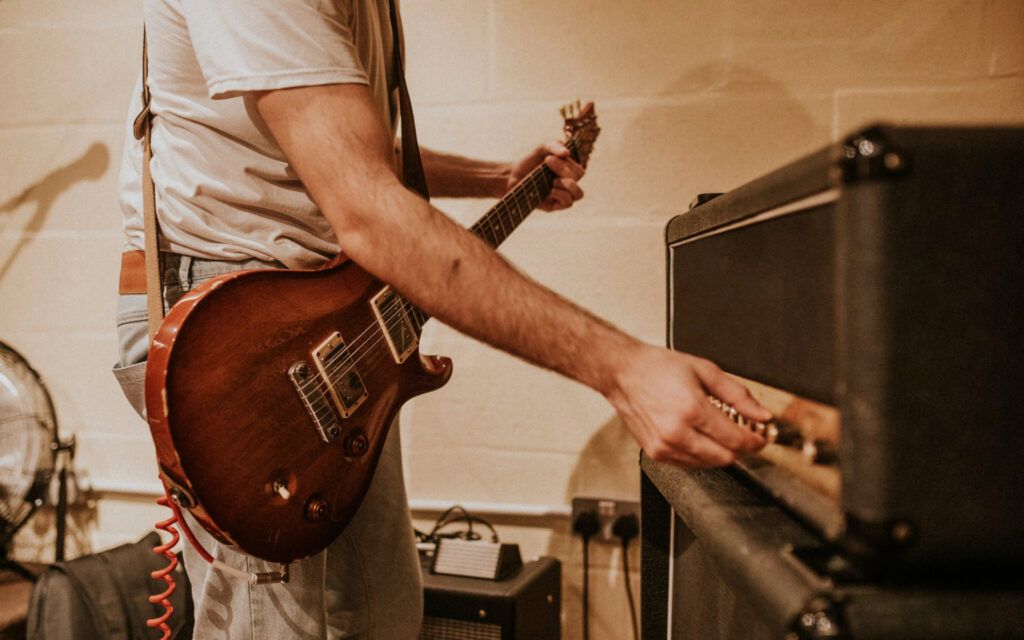If you play guitar and want to be able to record your sessions and possibly even write music, you’ll need to know how to connect your guitar to a computer!
Doing so also offers numerous additional benefits too, including the option to actually play your guitar through a computer and use digital amp simulators, rather than using a guitar amplifier.
Of course, this then raises the question of precisely how to play guitar through a computer. Thankfully, the process for setting everything up is not too complicated and only requires a few pieces of equipment.
In this post, we will take a more in-depth look at the precise equipment you will need in order to play guitar through a computer. Then, the article will also explain how you can use a computer to record your sessions, regardless of whether you are using an electric guitar, an electro-acoustic guitar, or a full acoustic guitar.
What Equipment Will I Need to Play Guitar Through a Computer?
When it comes to figuring out how to play guitar through a computer, the first thing you need to know about is the equipment that is required and, fortunately, it is a fairly small list. The first two pieces of equipment you will need are a guitar and a computer. Windows and MacOS computers are all perfectly viable here.
Next, you are going to need an audio interface. This is sometimes referred to as a recording interface, and most devices will plug into your computer via the USB port.
You can connect your guitar to this audio interface, using your usual guitar cable, and this will ensure your computer is receiving the best possible signal.
Depending on your specific needs, you can purchase audio interfaces that can facilitate lots of inputs, or you can buy a dedicated audio interface designed for recording guitars. If you only want to know how to play guitar through a computer, you’ll only need to invest in an interface with one or two inputs.
Beyond this, you will also need audio output equipment, so that you can listen back to anything you record, or listen live as you play guitar through a computer. Essentially, your two choices here are speakers or headphones and it may be a good idea to invest in both, as they are good for different things.
Speakers will allow you to play out loud, even without an amp, while headphones can be ideal for listening to any music you record, as it will allow you to hear things that may not be as noticeable through speakers.
What About Acoustic Guitars?
So what if you own an acoustic guitar instead of an electric one? Can you still connect your guitar to a computer?
For electro-acoustic guitars, the answer is a very simple ‘yes’ and the equipment needed is exactly the same as above. However, if your guitar is fully acoustic, with no output jack, do not worry; you can still record your guitar playing through a computer. However, you will either need to invest in a microphone or a soundhole pickup.
A microphone works as you would expect, picking up any sound played within close proximity. However, it is not always the absolute ideal option, as it may also pick up background noises and it’s trickier to obtain the perfect sound. Therefore, a soundhole pickup may be the better option overall.
A soundhole pickup is an electronic device, which can be attached to the hole on your acoustic guitar and then connected via a cable to your audio interface.
Your Digital Audio Workstation
Once you have your audio interface, computer, and your guitar, the final piece of the puzzle is your digital audio workstation. You need an application that will capture what you record, offer audio playback, and facilitate editing and mixing, which is why a full-featured digital audio workstation is recommended.
A digital audio workstation, or DAW, will be able to receive the audio you input from your guitar via your audio interface. The very best solutions here will likely cost money and it is worth investing if you are serious about audio recordings. Yet, it should be noted that there are plenty of free entry-level solutions on the market too.
Audacity and Reaper are both free solutions that are available for Windows and macOS. They will be sufficient for most needs, but they have certain limitations, such as an inability to apply real-time effects to your guitar playing while recording. If you are using a Mac, the GarageBand app comes free and will also suit most users.
Some of the best paid-for options include Logic X, Ableton Live, Pro Tools, and Cubase. These all offer a comprehensive range of features for recording, editing, and mixing.
Whatever the software solution you ultimately opt for, you will need to familiarize yourself with its workings, but the basics of recording and playing your guitar live should be simple enough to get to grips with.
Final Thoughts
Learning to connect your guitar to a computer will prove to be extremely beneficial for practicing, songwriting, and exploring the exciting world of digital sound recording!
But the process itself can seem a little daunting at first. The good news is, only a relatively small amount of specialist equipment is actually needed and once you have this equipment, the process itself is fairly straightforward.
An audio interface is the most essential purchase, and if you do not have access to headphones, speakers, or both, you will need to invest there too. A digital audio workstation software solution is also necessary, but whether you need a free application or a paid option will depend on your individual requirements.
There you have it; now you know how to play guitar through a computer. Happy recording!

